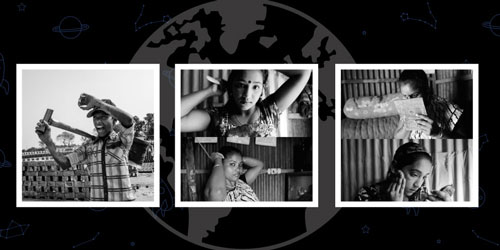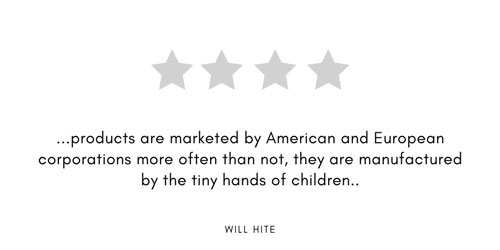
By WIll Hite
Shoes, レンガ, チョコレート. These are just a few examples of commodities used by consumers in Western civilizations. While these products are marketed by American and European corporations more often than not, they are manufactured by the tiny hands of children. The observational documentary, Forced, directed by Pep Bonet, covers this topic in a provocative but also open-minded approach. Sound designer José Bautista sets the stage for the film with the allusion of what sounds like a hammer beating against stone, evoking an image of the type of harsh labor people were subject to in the past during the days of constructing railroads and working in mines. The creators present Forced in black and white. It’s an interesting creative choice. Laws to regulate child labor have been in place in the U.S. and other parts of the world as early as the turn of the twentieth century. Today there are roughly 250 million child laborers worldwide.
For the purposes of his documentary, Bonet turns the camera on Asia, which contains sixty-one percent of the child labor population. He tailors the narrative to Bangladesh, a country in which child labor heavily influences both the economy as well as the culture. There is a scene in the film in which snarling dogs fight each other over scraps of food, perhaps symbolizing that the treatment and lifestyle of children in the same environment is not different. We get a glimpse at life working in the Nice brick factory. Children are not paid for the hours they work but instead by how much they produce. 従って, if a child stacks five thousand bricks in a day, they will be paid the American equivalent of $1.50. During the scenes at the brick factory, Bautista uses still shots captured by the photographer, a popular creative technique used in this film, that look like the type of pictures one might see in their history book. The juxtaposition of the video content reminds the viewer that this is not the past but very much the present.
The rest of the film focuses more specifically on sex work in Bangladesh, affecting girls from the ages of ten to eighteen. It is a system society condemns but does not necessarily enforce. This part of the film includes several talking heads such as Moyna, a woman who was sold into sex work when she was only fourteen years old. 最終的に, the interviewees explain that the success of the sex trade derives itself from a capitalist economy rooted in psychological torment. The girls sold into this lifestyle cannot escape it. Among many horrors, those in charge of the brothels build on their psychological manipulation by referring to the girls working there as ‘bad girls’. Many of the girls refer to themselves by this identity, indicating the trauma of being forced into sex work has deeply impacted their self worth. 最終的に, because many of the girls fear that once they reach a certain age they will be unable to work, a lot of them have children. If they have daughters, they will most likely grow up to continue working in the brothel in order to feed the family.
The last part of the documentary demonstrates one of the darkest sides of the child labor world and ultimately makes the argument that if children can legally stack five thousand bricks for $1.50, then people will be able to get away with it just as easily as those who control the corrupt system that drives the youth sex trade.
I would give this film a 5/5 rating on account of its brilliant narration, 編集, シネマトグラフィー, and subject matter. It has left a desire in me to learn more about the world of child labor as well as a desire for me as an individual to try and affect change.
お見逃しなく Forced, プラネットクラスルームで上映中.
Will Hiteは、コネチカット大学の先輩で、演劇と映画の研究の学位を取得しています。. 彼の重点分野には、プレイライティングとスクリーンライティングが含まれます, 演技, 演出, ビデオ編集, とドラマツルギー. ウィルは彼の大学で学生が運営する演劇シーンの熱心なメンバーでした, ウィッグとキャンドルの戯曲の読み物を整理するのを手伝うだけでなく、Crooked CurtainsTheaterと呼ばれる戯曲クラブを設立しました。




最近のコメント